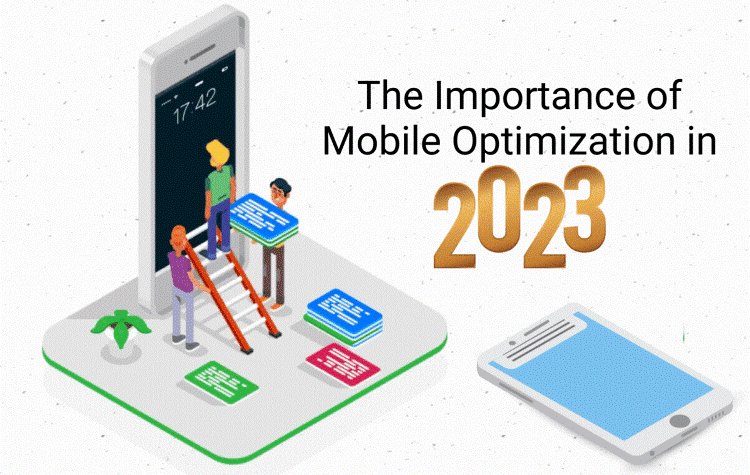
The Ultimate Guide to Mobile Optimization: Methods for Enhancing Web Site Efficiency on Smartphones and Tablets
In a digitally-driven age where smart phones have actually ended up being the key means of accessing the net, the significance of maximizing internet sites for mobile phones and tablet computers can not be overemphasized. As users progressively depend on their portable gadgets to browse, store, and connect with on the internet material, companies need to adapt to satisfy the progressing demands of their audience. The strategies for improving website efficiency on mobile systems exceed plain adjustment; they encompass a detailed strategy that entails responsive style, speed optimization, web content strategies, and individual experience improvements. By diving right into the complexities of mobile optimization, organizations can not just fulfill individual assumptions yet likewise stay in advance in an affordable digital landscape.
Relevance of Mobile Optimization
Mobile optimization plays a critical duty in enhancing individual experience and driving conversion prices in the ever-evolving digital landscape. With the enhancing use smartphones and tablet computers for browsing the net, guaranteeing that sites are enhanced for mobile devices has actually come to be necessary for companies - Mobile Optimization. A mobile-optimized internet site not only adjusts seamlessly to different screen dimensions yet additionally lots promptly, offering users with a smooth and satisfying browsing experience
In today's busy world, individuals expect immediate accessibility to details on the go. A web site that is not optimized for mobile phones risks shedding prospective customers due to slow packing times or a poor customer interface. By purchasing mobile optimization, organizations can satisfy the requirements of their mobile target market, bring about greater involvement and increased conversions.
Furthermore, internet search engine like Google focus on mobile-friendly websites in their rankings, making mobile optimization necessary for improving visibility and bring in natural website traffic. Mobile Optimization. In general, the significance of mobile optimization can not be overemphasized, as it directly affects user fulfillment, conversion rates, and general business success in the digital world
Responsive Style Techniques
Carrying out responsive design techniques makes sure that websites dynamically change their layout and material based on the individual's gadget screen size, giving a constant customer experience across different platforms. One of the most common approaches made use of in receptive design is producing fluid grids that permit web content to resize proportionally to the screen dimension. This makes certain that elements on the webpage preserve their family member spacing and arrangement, maximizing the seeing experience for individuals on various gadgets.
Additionally, making use of adaptable pictures that can scale with the dimension of the viewport helps protect against pictures from being cropped or misshaped on smaller sized displays. CSS media inquiries play a vital role in responsive style by allowing programmers to use particular styles based on the device characteristics such as display width, height, and alignment. By leveraging media questions, internet sites can adapt their format and style to match smartphones, tablets, and desktop displays flawlessly.
Integrating receptive layout techniques not just improves user experience however also adds to enhanced internet search engine rankings, as online search engine like Google focus on mobile-friendly internet sites in their mobile search engine result. By embracing responsive design, internet sites can satisfy the diverse needs of customers accessing web content on a range of devices, ultimately driving engagement and conversions.
Rate and Efficiency Optimization

One key strategy is maximizing photos and multimedia content to read this article lower data dimensions without compromising high quality. Compressing images, leveraging modern-day picture layouts like WebP, and careless packing offscreen images work approaches to speed up load times (Mobile Optimization). In addition, decreasing HTTP requests, leveraging web browser caching, and lowering server action times are critical steps in boosting performance.
Applying a content delivery network (CDN) can additionally considerably boost site rate by distributing material across multiple web servers around the world, lowering latency for individuals accessing the site from different areas. Prioritizing vital above-the-fold material and delaying non-essential manuscripts can better boost viewed performance. By concentrating on speed and performance optimization, web sites can provide a seamless and gratifying customer experience on mobile gadgets.
Mobile-Friendly Content Strategies
Mobile-friendly content approaches include tailoring the presentation of information to suit the smaller sized displays and on-the-go nature of smartphone and tablet computer individuals. In addition, breaking up material right into shorter paragraphs and using bullet factors can aid boost readability and make it much easier for individuals to take in info quickly.
Integrating appealing visuals, such as photos and videos optimized for mobile viewing, can additionally improve the general individual experience. These visuals must matter, high-grade, and tons rapidly to stop customers from shedding interest. Furthermore, integrating interactive elements like quizzes, surveys, or studies can improve customer interaction and encourage active participation.
Individual Experience Enhancements
Building on the structure of mobile-friendly material techniques, enhancing individual experience entails optimizing every touchpoint to make sure seamless communication and complete satisfaction for mobile users. One essential element of boosting customer experience on mobile phones is ensuring fast filling times. Individuals anticipate web sites to pack rapidly on their smart devices and tablet computers, and any hold-ups can bring about frustration and boosted bounce rates. Implementing responsive design is one more vital variable in improving customer experience. Receptive design makes sure that websites adjust to different display dimensions and resolutions, supplying a constant and user-friendly experience across different tools.
In addition his comment is here to speed and receptive layout, simplifying navigation is necessary for a favorable individual experience. Clear and intuitive navigation food selections, popular search bars, and tactically positioned call-to-action buttons can help customers easily locate what they are looking for on a mobile website. Optimizing kinds for mobile individuals by reducing the number of areas and using auto-fill functions can also boost the total customer experience. By concentrating on these customer experience improvements, websites can Recommended Site effectively engage and keep mobile site visitors.
Verdict
Comments on “Attain Peak Performance with Data-Driven Mobile Optimization”